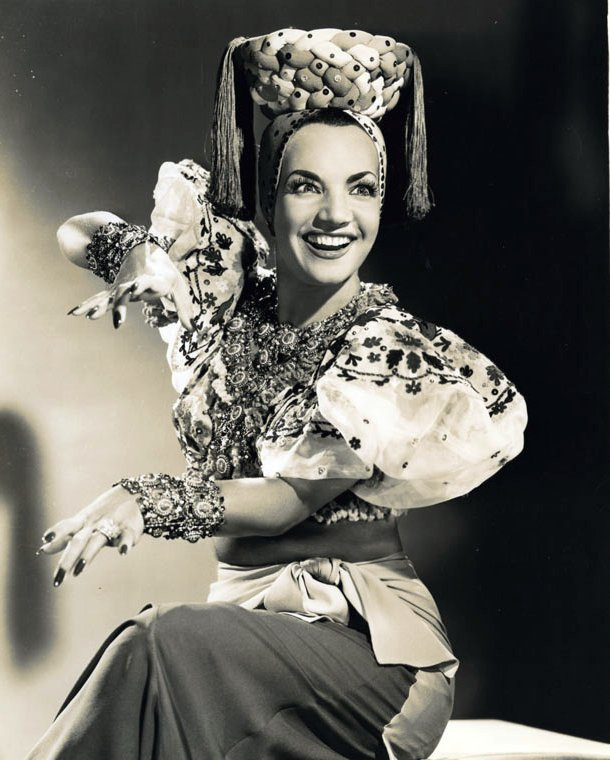Stripping Away the Mystery

At the time of Marilyn Monroe's death, she was not, contrary to popular belief, unemployed and unemployable. Although she had been terminated from the unfinished Something's Got to Give (1962) due to excessive absenteeism, she had been quietly reinstated at 20th Century Fox, and scheduled to finish the picture. Of course, Monroe's death at age 36 on August 5, 1962 rendered that impossible; the film was completely recast and revamped as Move Over Darling (1963), starring Doris Day and James Garner.



With Monroe's death, the film went forward with a new, misleading title, The Stripper (1963) -- with the odd choice of Joanne Woodward in the lead. Perhaps in deference to the Oscar-winning Woodward's reputation as a heavy-hitting dramatic actress, Travilla ditched the more glamorous concepts he had envisioned for Monroe, and did tawdrier, cheaper-looking costumes for Woodward, admittedly more in keeping with the character's background as a small town Kansas girl with shattered Hollywood ambitions.

The film wasn't a success, although many did praise Woodward's fine acting; of all the proposed projects that Monroe didn't live to see come to fruition, this may be the most tantalizing. She certainly would have known how to get inside this particular character, perhaps even more so than the talented Miss Woodward. Of course, Fox being Fox, the publicity campaign verged on the exploitative, promising a leering, lecherous look at a burlesque queen, when in fact the film was more of a character study. Playing up the "stripper" angle, Gypsy Rose Lee was cast in a small, perfectly superfluous role. Adding to the tackiness, the beginning of the film includes a scene (which presumably would not have made it into the Monroe version) in which Lila is mistaken by Hollywood tourists for Jayne Mansfield and Kim Novak -- Mansfield being Fox's second-string blonde, used as a bargaining chip to keep Monroe in line, and Novak being the first actress asked to replace Monroe in Something's Got to Give.


When we originally posted the Travilla sketches, jiva was the first, and only, to correctly guess the film and the actress -- but later recanted! Darling Angela, never doubt your instincts; after all, it takes a beautiful, leggy blonde to know one!
Labels:
1960s,
blondes,
Doris Day,
fashion,
glamour,
James Garner,
Jayne Mansfield,
Jean Louis,
Joanne Woodward,
Kim Novak,
Marilyn Monroe,
mystery,
Travilla
Guess Who?




These are Travilla sketches for Marilyn Monroe, created for a film she never made. Name the film and the actress who eventually played the part intended for Marilyn.
Labels:
Marilyn Monroe,
mystery,
Travilla
Two on a Couch
 Monroe on Crawford: "I've always admired Miss Crawford for being such a wonderful mother -- for taking four children and giving them a fine home. Who better than I knows what that means to homeless little ones?"
Monroe on Crawford: "I've always admired Miss Crawford for being such a wonderful mother -- for taking four children and giving them a fine home. Who better than I knows what that means to homeless little ones?" Crawford on Monroe: "She was cheap, an exhibitionist. She was never a professional, and that irritated the hell out of people. But, for God's sake, she needed help. She had all these people on her payroll. Where the hell were they when she needed them? Why in hell did she have to die alone?"
Crawford on Monroe: "She was cheap, an exhibitionist. She was never a professional, and that irritated the hell out of people. But, for God's sake, she needed help. She had all these people on her payroll. Where the hell were they when she needed them? Why in hell did she have to die alone?"
Labels:
1950s,
Cecil Beaton,
furs,
glamour,
interiors,
Joan Crawford,
Marilyn Monroe,
shoes
Oh, Rob!

When Ritchie is shuttled off to stay at Jerry and Millie's, and Rob and Laura can Twizzle all night long...
Labels:
1960s,
glamour,
hair,
Mary Tyler Moore
We Forgot, Okay?
And this also gives a chance to reiterate: a bird in the hair is worth two in the bush.
Labels:
1950s,
anne francis,
birds,
glamour,
hair
Subscribe to:
Comments (Atom)










































